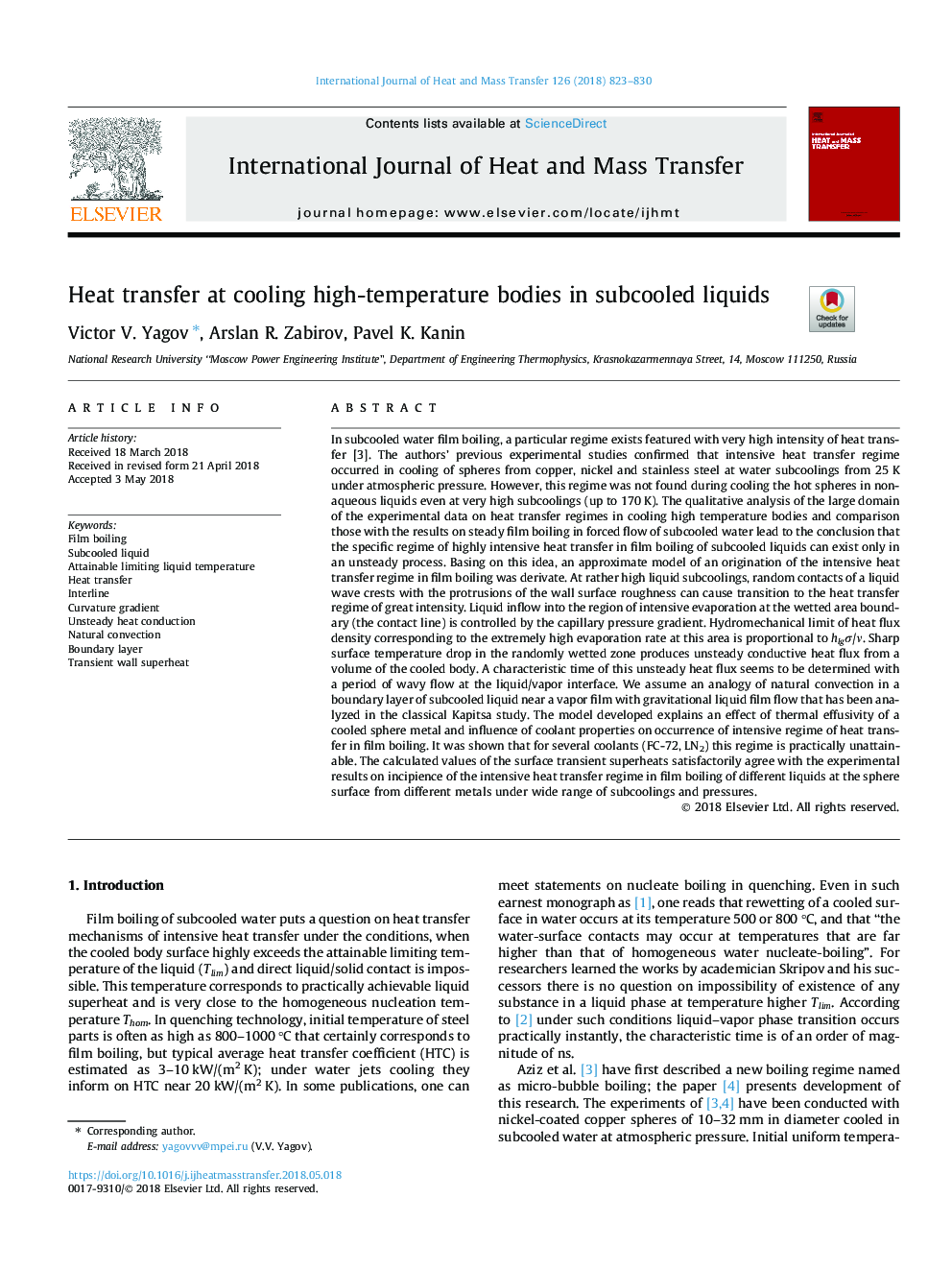| Article ID | Journal | Published Year | Pages | File Type |
|---|---|---|---|---|
| 7054037 | International Journal of Heat and Mass Transfer | 2018 | 8 Pages |
Abstract
In subcooled water film boiling, a particular regime exists featured with very high intensity of heat transfer [3]. The authors' previous experimental studies confirmed that intensive heat transfer regime occurred in cooling of spheres from copper, nickel and stainless steel at water subcoolings from 25â¯K under atmospheric pressure. However, this regime was not found during cooling the hot spheres in nonaqueous liquids even at very high subcoolings (up to 170â¯K). The qualitative analysis of the large domain of the experimental data on heat transfer regimes in cooling high temperature bodies and comparison those with the results on steady film boiling in forced flow of subcooled water lead to the conclusion that the specific regime of highly intensive heat transfer in film boiling of subcooled liquids can exist only in an unsteady process. Basing on this idea, an approximate model of an origination of the intensive heat transfer regime in film boiling was derivate. At rather high liquid subcoolings, random contacts of a liquid wave crests with the protrusions of the wall surface roughness can cause transition to the heat transfer regime of great intensity. Liquid inflow into the region of intensive evaporation at the wetted area boundary (the contact line) is controlled by the capillary pressure gradient. Hydromechanical limit of heat flux density corresponding to the extremely high evaporation rate at this area is proportional to hlgÏ/ν. Sharp surface temperature drop in the randomly wetted zone produces unsteady conductive heat flux from a volume of the cooled body. A characteristic time of this unsteady heat flux seems to be determined with a period of wavy flow at the liquid/vapor interface. We assume an analogy of natural convection in a boundary layer of subcooled liquid near a vapor film with gravitational liquid film flow that has been analyzed in the classical Kapitsa study. The model developed explains an effect of thermal effusivity of a cooled sphere metal and influence of coolant properties on occurrence of intensive regime of heat transfer in film boiling. It was shown that for several coolants (FC-72, LN2) this regime is practically unattainable. The calculated values of the surface transient superheats satisfactorily agree with the experimental results on incipience of the intensive heat transfer regime in film boiling of different liquids at the sphere surface from different metals under wide range of subcoolings and pressures.
Keywords
Related Topics
Physical Sciences and Engineering
Chemical Engineering
Fluid Flow and Transfer Processes
Authors
Victor V. Yagov, Arslan R. Zabirov, Pavel K. Kanin,
